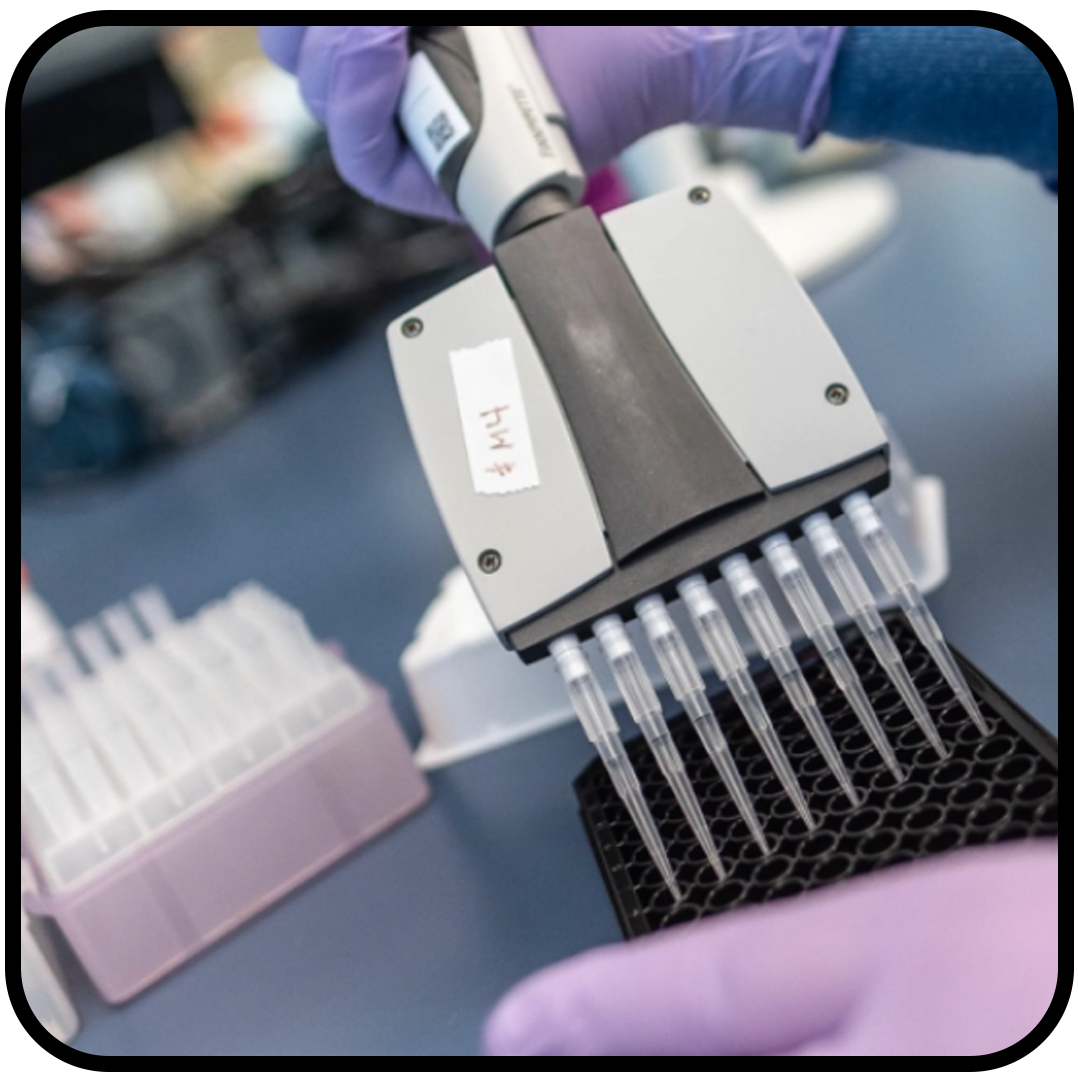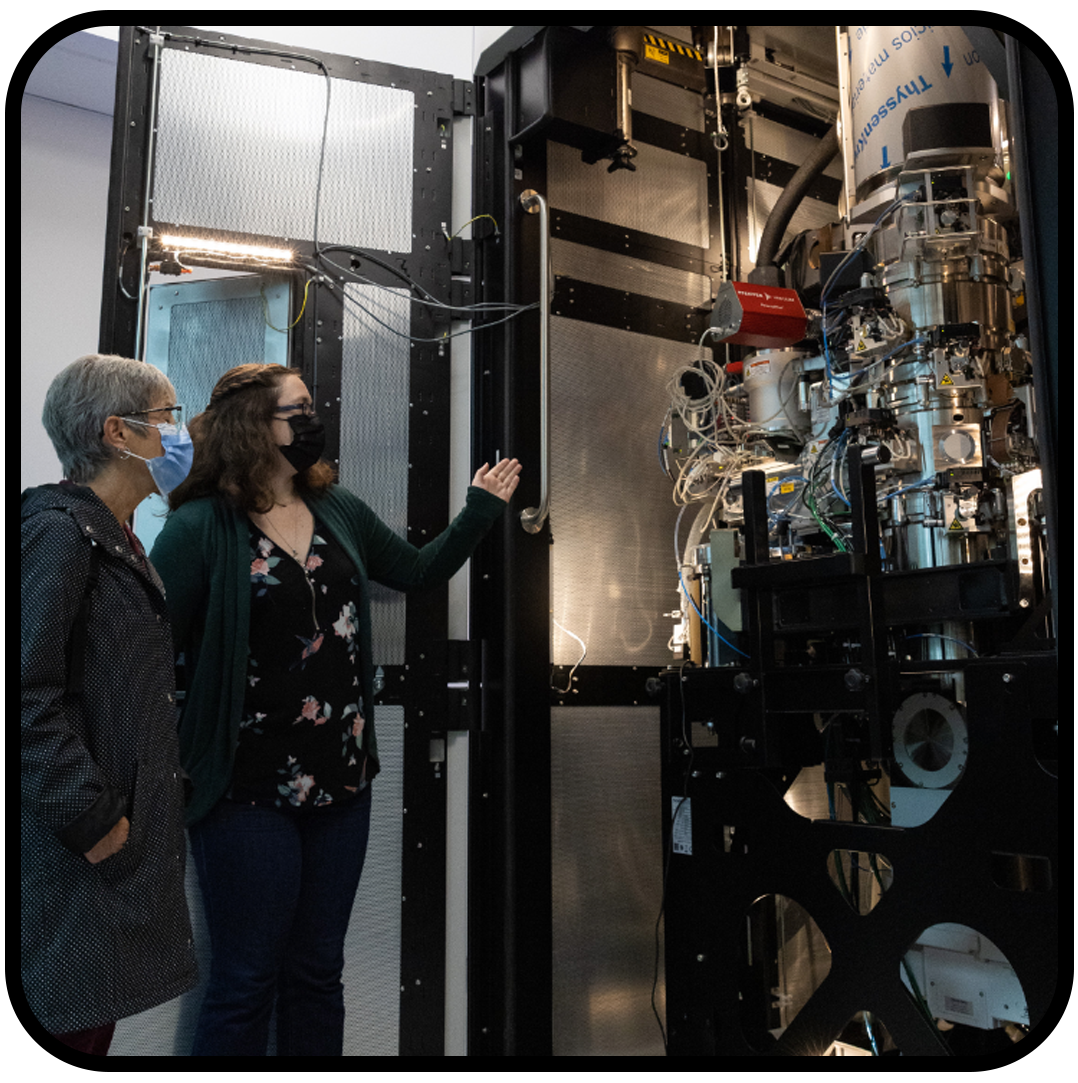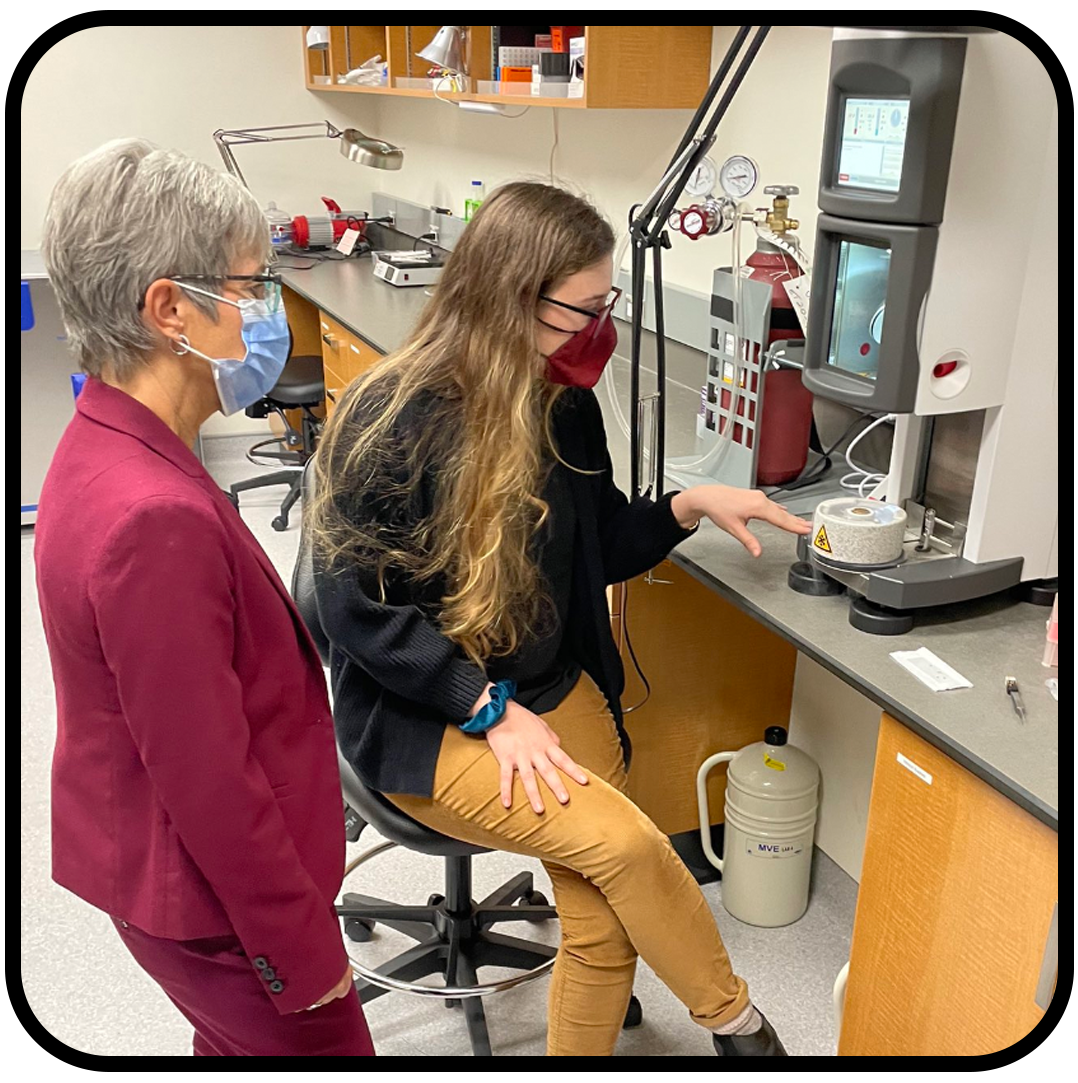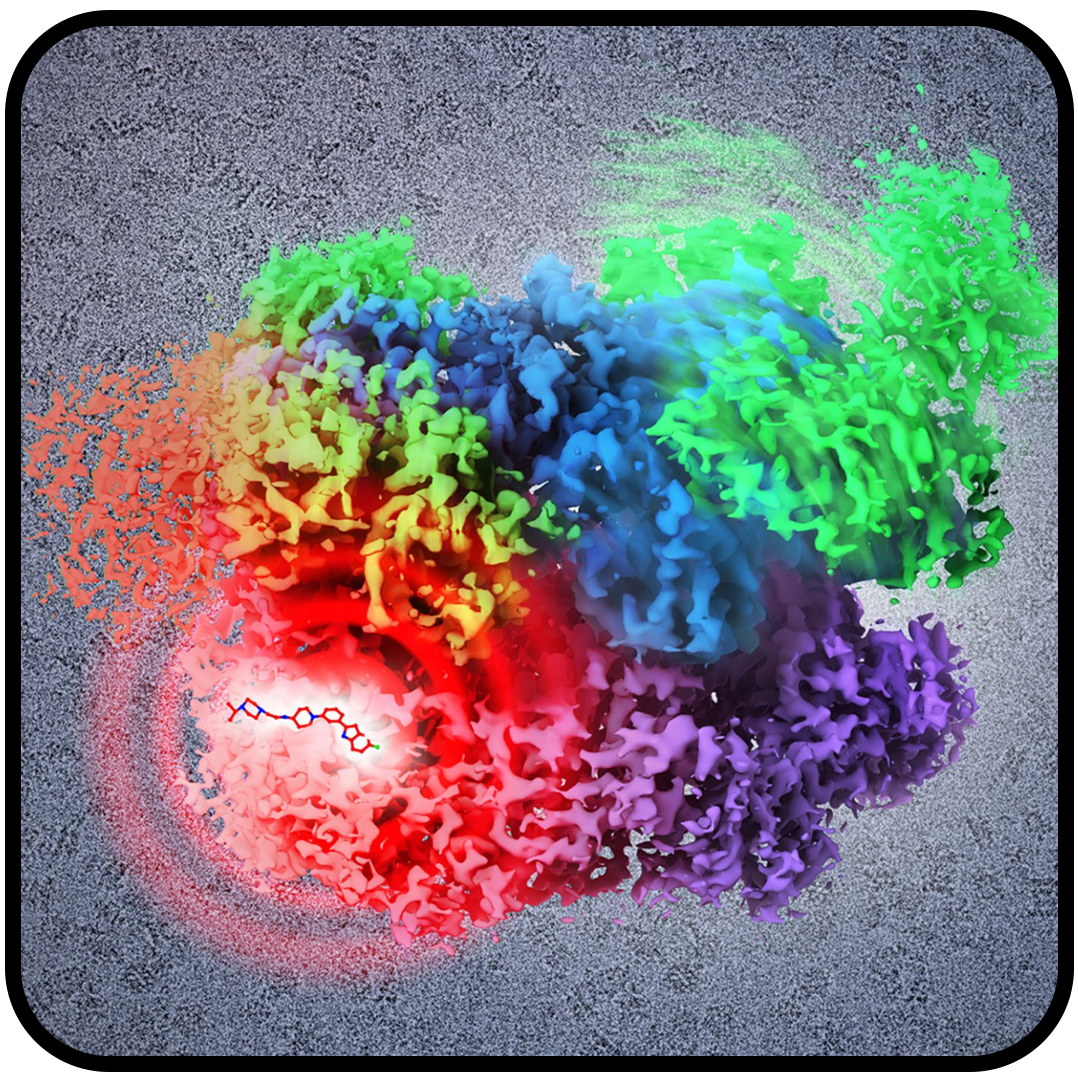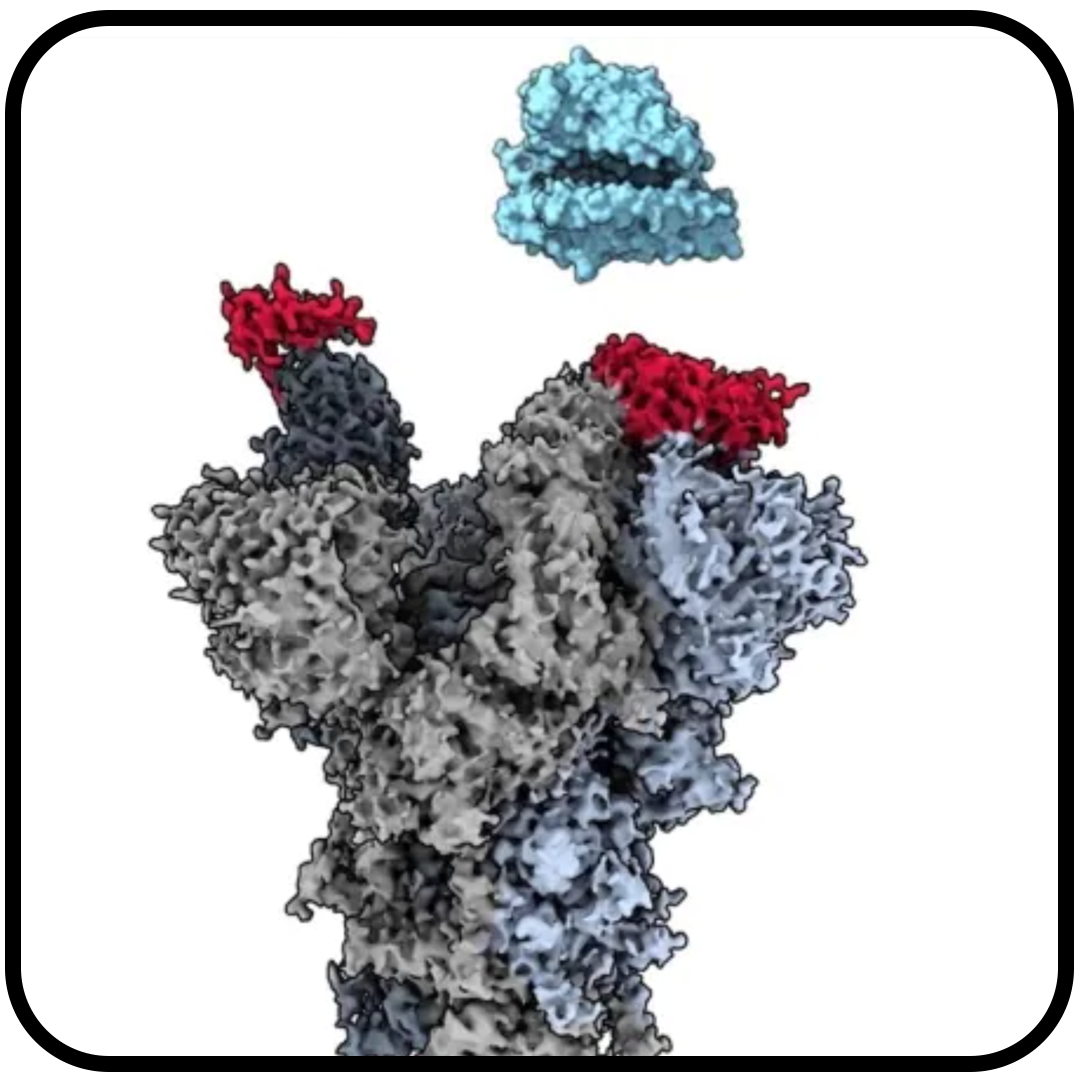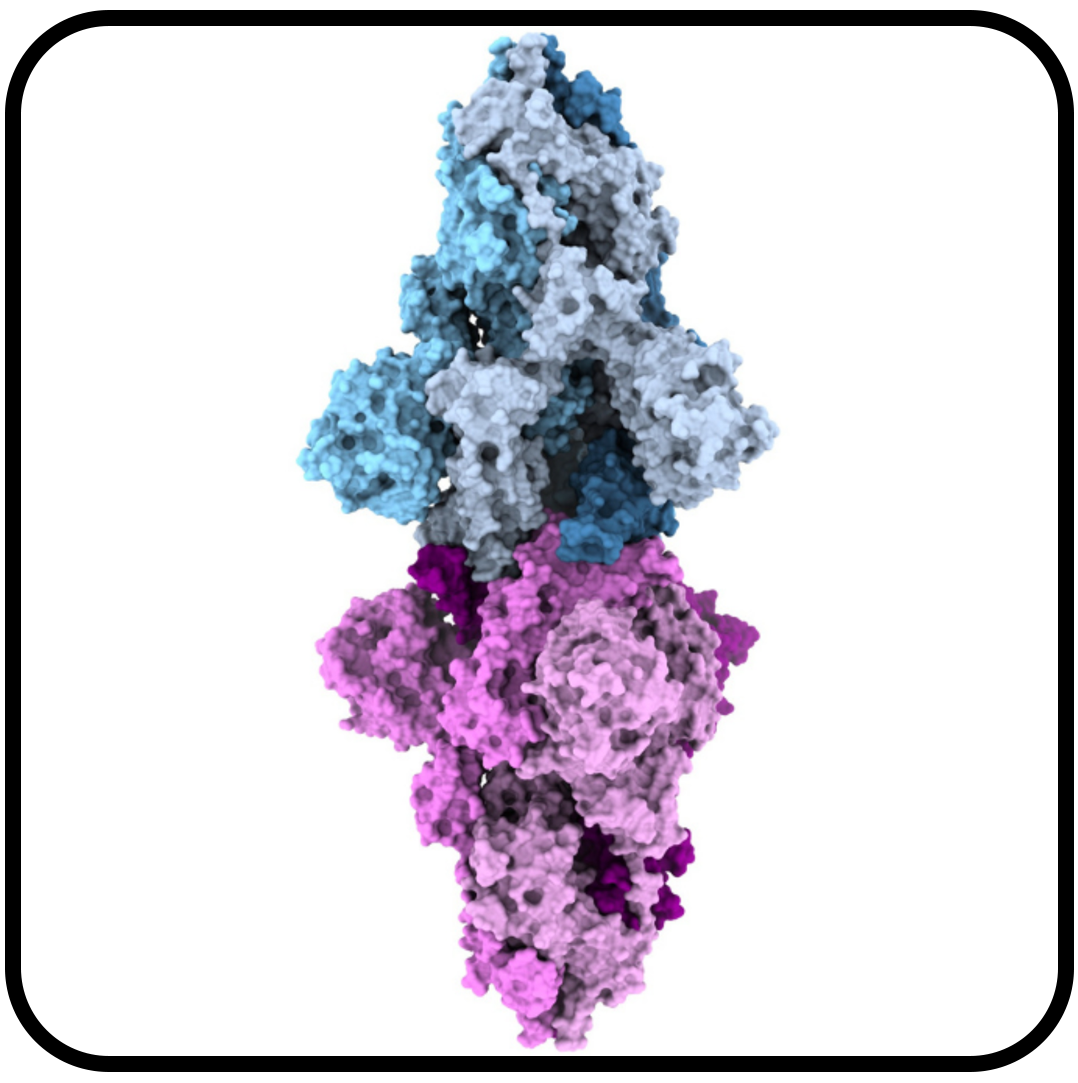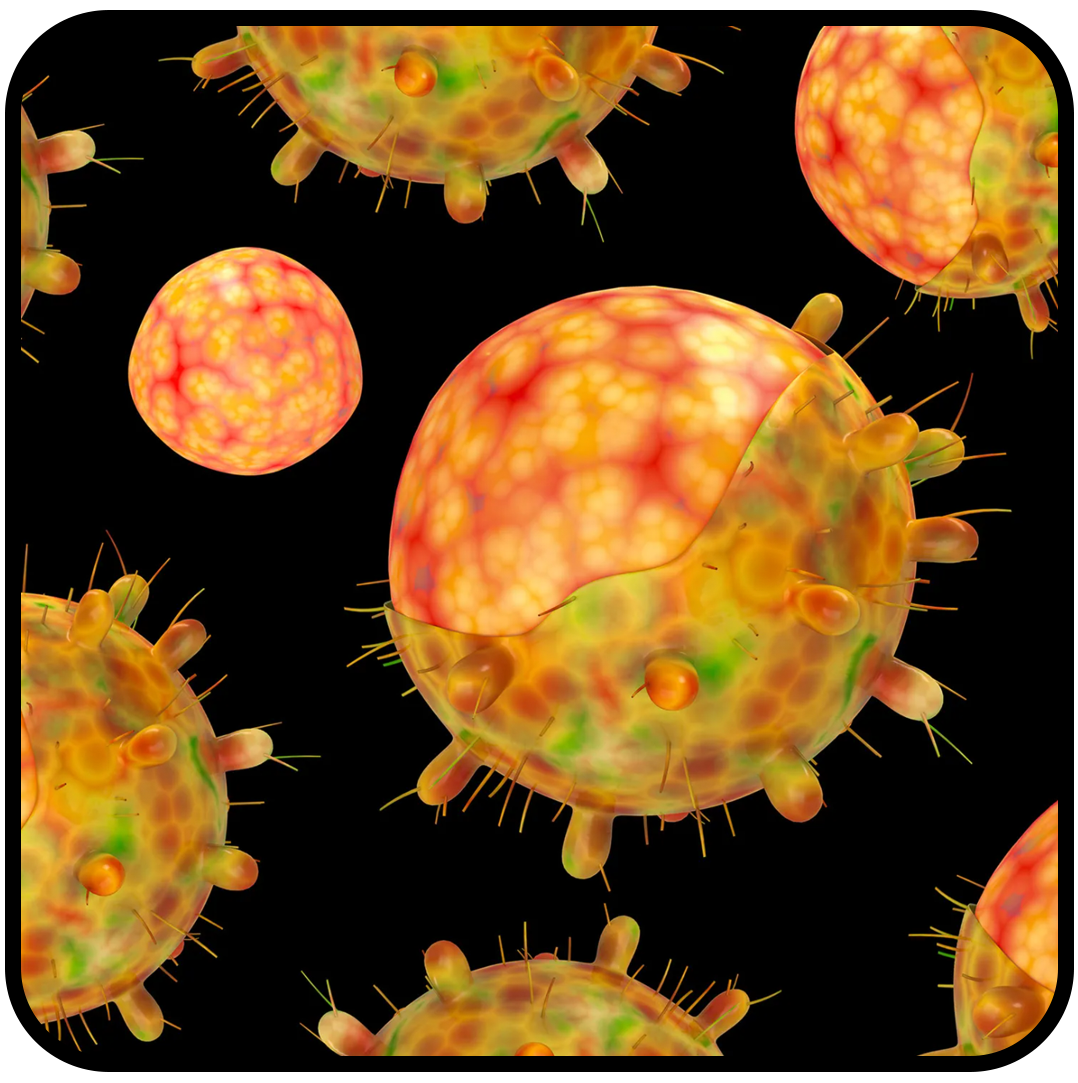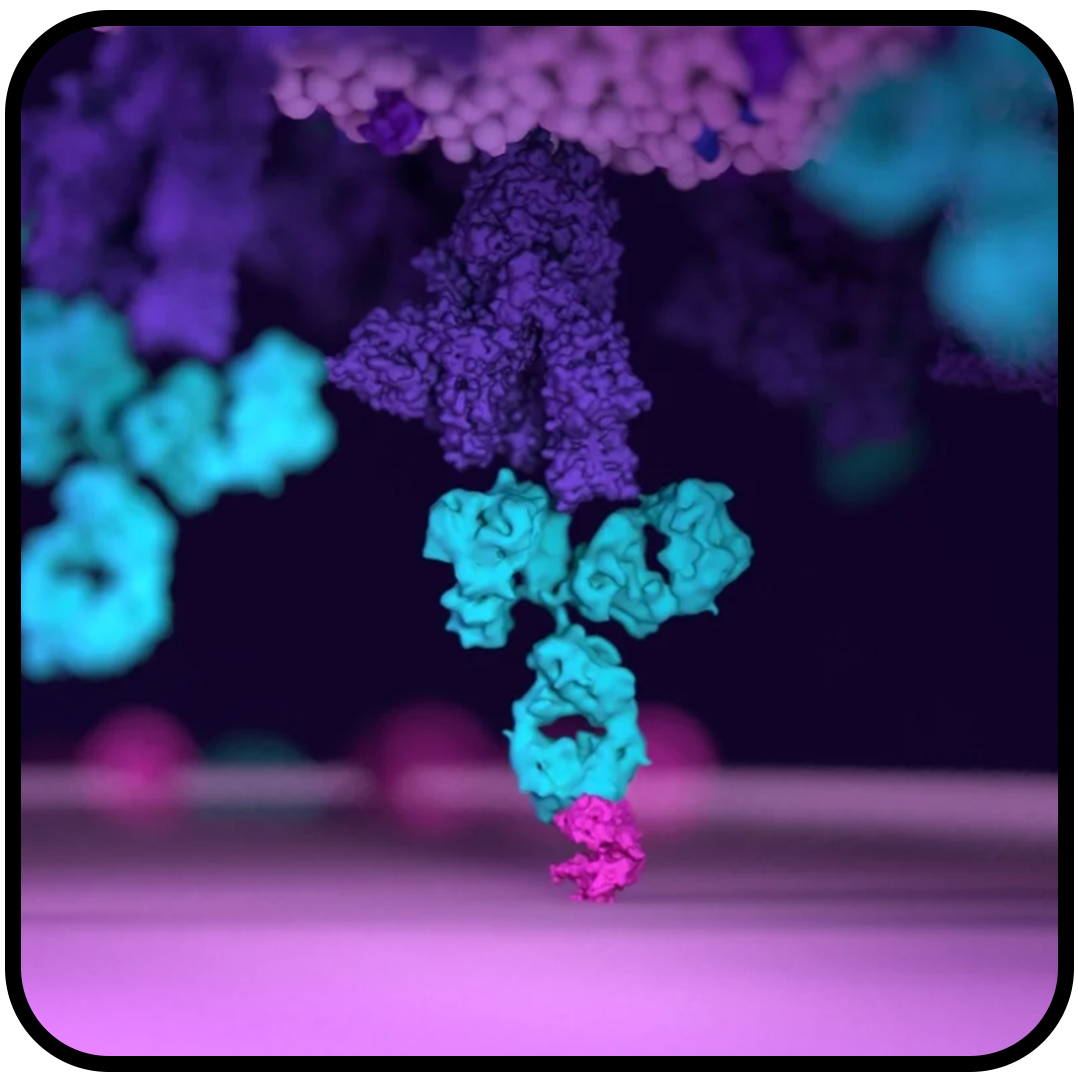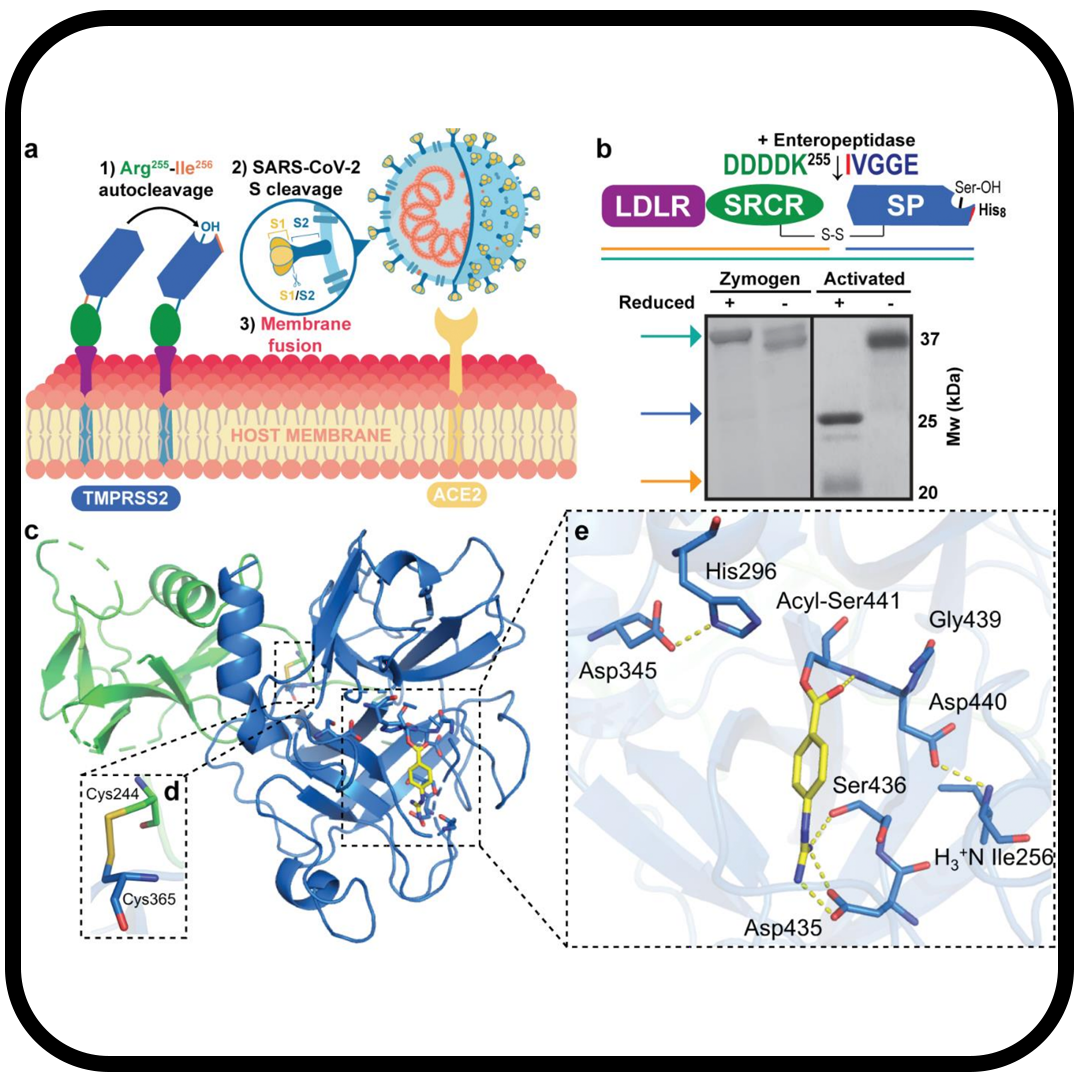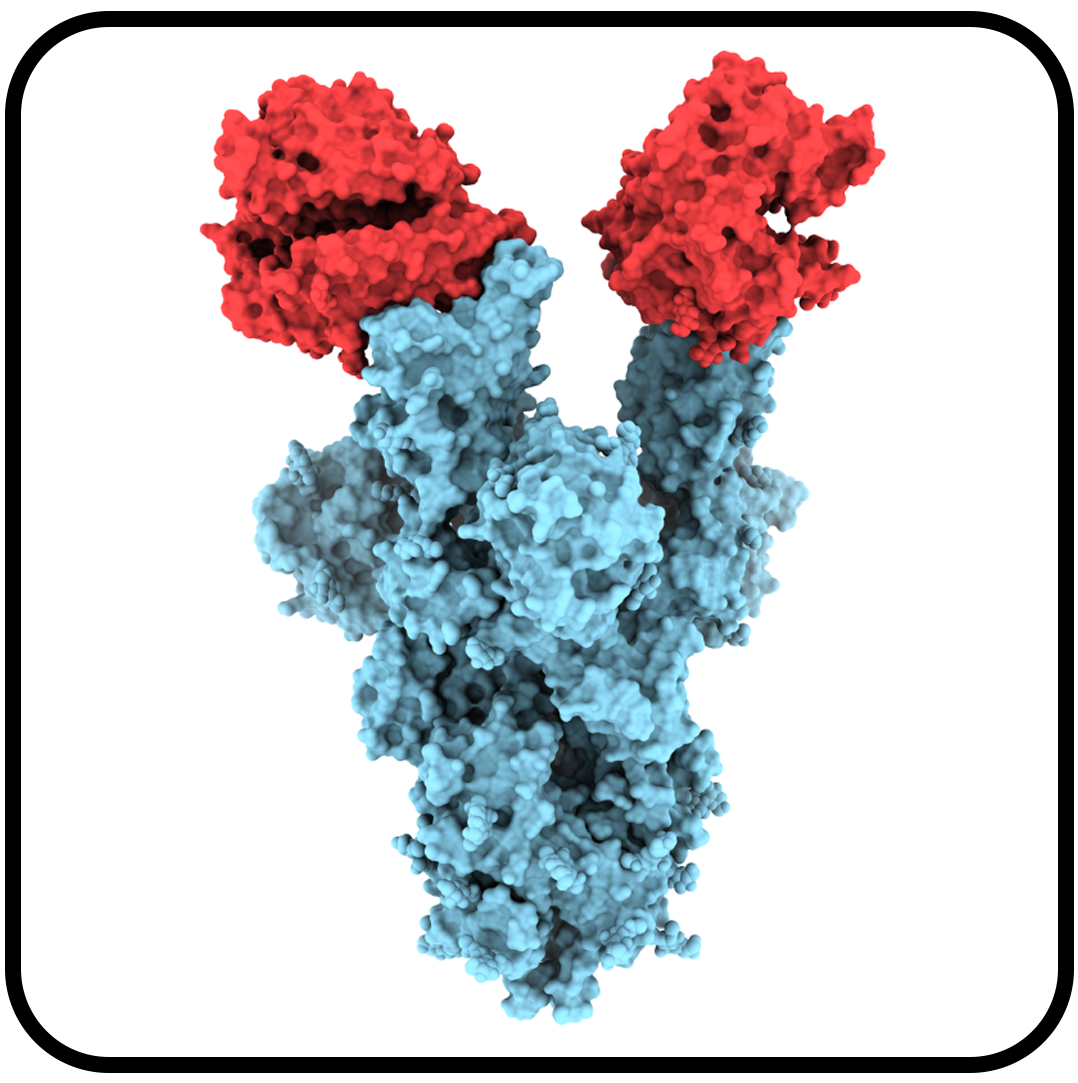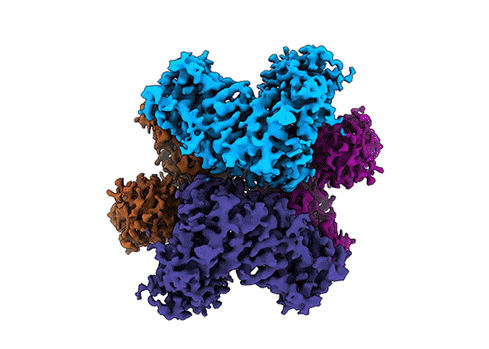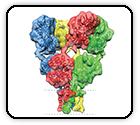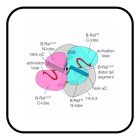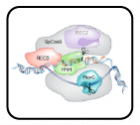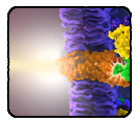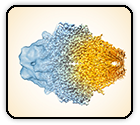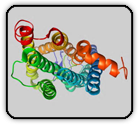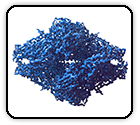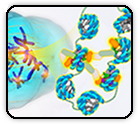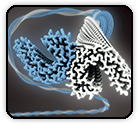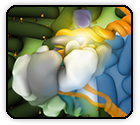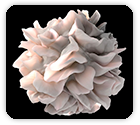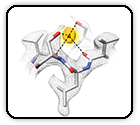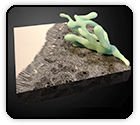Delivering AI’s promise of better health care
The University of British Columbia Faculty of Medicine News | June 12, 2025
Jump-started by a $22.5 million gift, UBC’s new AI and Health Network is deploying powerful artificial intelligence tools to drive health system innovation and improve patient care.
One project, led by UBC professor Dr. Sriram Subramaniam, is combining AI with advanced cryo-electron microscopy to design antibody treatments on a rapid time scale. These therapies can be tailored in near real-time to fight rapidly evolving viruses—such as COVID-19 or H5N1 bird flu—as well as cancers that gain mutations to become drug-resistant.
$140M for UBC-led research hub to accelerate drug development and biomanufacturing
The University of British Columbia Faculty of Medicine News | June 4, 2024
The funding supports four multidisciplinary research projects through Canada’s Immuno-Engineering and Biomanufacturing Hub (CIEBH), a UBC-led alliance of more than 50 academic, industry, not-for-profit and health system partners that have come together to make Canada a leader in advanced immune-based therapeutics like RNA vaccines, antibody treatments and cell therapies.
Federal government invests in pandemic rapid response lab at UBC
Business in Vancouver | May 31, 2024
The federal government today announced $140 million in funding for Canada’s Immuno-Engineering and Biomanufacturing Hub (CIEBH) out of the University of BC. It will support four multi-disciplinary research projects.
B.C. drug developers get boost with government funding for new manufacturing facility
The Globe and Mail | May 31, 2024
UBC professor Sriram Subramaniam, meanwhile, will lead a project in partnership with local drug developers and pharmaceutical giant GSK, using cryo-electron microscopy and AI-enabled drug discovery to build a bank of antibody treatments for pathogens with pandemic-causing potential. “The total focus is on product that can be manufactured at scale to go into humans,” Dr. Subramaniam said.
Canada’s Immuno-Engineering and Biomanufacturing Hub research teams awarded $140M in federal funding
The University of British Columbia Faculty of Medicine News | May 6, 2024
The Government of Canada announced an investment of $140 million in projects associated with Canada’s Immuno-Engineering and Biomanufacturing Hub (CIEBH) — a UBC-led national research hub with more than 50 academic, industry, not-for-profit and health sector partners.
UBC and the B.C. biotech boom
The University of British Columbia Faculty of Medicine News | March 14, 2024
In a detailed exploration of British Columbia’s burgeoning biotech sector, The Globe and Mail recently cast a spotlight on Vancouver’s emergence as a global pharmaceutical leader and the pivotal role UBC researchers and UBC spin-off companies are playing in driving the sector’s growth.
B.C. biotech boom: Vancouver looks to join the global big leagues of modern medicine
The Globe and Mail | March 9, 2024
Dr. Subramaniam was itching to be both an entrepreneur and academic as he searched for his next posting six years ago. He considered several offers but says “not one had the vision that UBC had” to support his dual ambitions. His $42-million research chair package included funding to buy and install a giant cryogenic electron microscope on campus.
Drug discovery at an atomic scale
The University of British Columbia Faculty of Medicine News | February 26, 2024
UBC’s Dr. Sriram Subramaniam is using powerful cryo-electron microscopes to accelerate drug development for cancer, infectious diseases and more.
2023 Faculty of Medicine Award Recipients
The University of British Columbia Faculty of Medicine News | October 3, 2023
These awards celebrate extraordinary faculty and staff who exemplify our values — respect, integrity, compassion, collaboration and equity — and have made outstanding contributions toward our vision to transform health for everyone.
Faculty of Medicine scientists, spin-off companies among Life Sciences BC 2023 award winners
The University of British Columbia Faculty of Medicine News | July 28, 2023
A number of UBC Faculty of Medicine researchers and spin-off companies are among the recipients of the 25th Annual Life Sciences BC Awards, highlighting the significant role UBC community members are playing in propelling B.C.’s life sciences sector forward.
UBC ranked 22nd in the world for life sciences and medicine
The University of British Columbia Faculty of Medicine News | March 27, 2023
Another UBC professor, Dr. Sriram Subramaniam, led first-in-the-world work to map the Omicron spike protein and identified a major therapeutic target for all variants of SARS-CoV-2.
Combatting COVID-19: UBC’s contributions to overcoming the pandemic
The University of British Columbia Magazine | March 13, 2023
A research team, led by Professor Sriram Subramaniam in the UBC Department of Biochemistry and Molecular Biology, made several significant breakthroughs by using massive microscopes — up to 13 feet tall. Using cryo-electron microscopy, the team captured images of the COVID-19 spike protein at near-atomic resolution to assess the binding of different antibody treatments to the virus. By September 2020, the researchers determined that antibody-based drug Ab8 prevented and neutralized the virus.
UBC Medicine on Twitter
Twitter | February 22, 2023
We were delighted to welcome Minister Selina Robinson for a tour of UBC’s Cryo-EM Guided Drug Design lab, where UBC researchers and students are accelerating the process of drug discovery.
Selina Robinson on Twitter
Twitter | February 21, 2023
Thank you to @UBC & @cryoem_UBC for showing me the great work of students and faculty with the cryo electron microscope. So fascinating!
Cryo-EM Incites a “Resolution Revolution,” Rousing Drug Discovery
Genetic Engineering & Biotechnology News | December 7, 2022
Once derided as “blobology,” cryo-electron microscopy is being celebrated for bringing structure-based drug design into focus.
UBC researchers say they’ve found ‘weak spot’ in all COVID-19 variants that could lead to better treatment
CBC News | August 18, 2022
In a peer-reviewed study published Thursday, the research team said they found a largely consistent soft spot — like a dent in the virus’s spike protein armour — that has survived the coronavirus’s mutations to date. Scientists determined a certain antibody fragment was able to “effectively neutralize” all the variants, to some degree, because it exploited the vulnerability.
Delta vs. Kappa: study examines molecular factors that fuel COVID-19 variants
UBC Faculty of Medicine | February 10, 2022
The study, published in Nature Communications, examines the structural and biochemical properties of the Kappa and Delta variants, which co-emerged in India in late 2020. The findings explain how the Delta variant may have been able to beat out the Kappa variant and become dominant across the globe.
UBC scientists unveil world’s first molecular-level analysis of Omicron spike protein
EurekAlert! | January 20, 2022
Researchers at UBC’s faculty of medicine have conducted the world’s first molecular-level structural analysis of the Omicron variant spike protein. Findings shed light on factors behind Omicron’s increased transmissibility, including strong antibody evasion and binding with human cells.
This AI Software Nearly Predicted Omicron’s Tricky Structure
WIRED | January 10, 2022
ON NOVEMBER 26, the World Health Organization designated the strain of coronavirus surging in South Africa a “variant of concern” and christened it Omicron. The next day, University of British Columbia professor Sriram Subramaniam downloaded a genome sequence posted online and ordered samples of Omicron DNA to be shipped to his lab.
COVID-19: UBC team drills down to what makes Omicron so transmissible
Vancouver Sun | December 23, 2021
It took a team of University of British Columbia researchers just 10 days to turn a genetic sample from COVID-19’s highly transmissible Omicron variant into the world’s first molecular-level imaging that reveals the secrets of its infectiousness.
Omicron variant has 37 spike protein mutations: Canadian study
Hindustan Times | December 23, 2021
“Analysis of the sequence of the Omicron genome suggests that it is not derived from any of the currently circulating variants, and may have a different origin,” the Canadian study stated.
Pictured: How the Omicron variant’s 37 mutations make it better at infecting human cells as seen in amazing detail by super-high powered cryo-electron microscope
Daily Mail | December 22, 2021
‘The Omicron variant is unprecedented for having 37 spike protein mutations – that’s three to five times more mutations than any other variant,’ said Subramaniam, the lead author on the study and a biochemistry professor at the University of British Columbia, in a statement.
UBC scientists unveil world’s first molecular-level analysis of Omicron variant spike protein
UBC News | December 22, 2021
UBC researchers are the first in the world to conduct a molecular-level structural analysis of the Omicron variant spike protein.
The analysis—done at near atomic resolution using a cryo-electron microscope—reveals how the heavily mutated variant infects human cells and is highly evasive of immunity.
Djavad Mowafaghian Centre for Brain Health 2020/2021 Year in Review
Djavad Mowafaghian Centre for Brain Health | October 2021
DMCBH is the most comprehensive brain care and research centre in Canada, and has transformed UBC into an international leader in neuroscience research.
Study reveals how SARS-CoV-2 variants of concern modulate receptor and antibody binding
News-Medical.Net Life Sciences | August 2021
In a trailblazing engineering effort, Canadian and US researchers indicate that the emergence of novel variants of the severe acute respiratory syndrome coronavirus 2 (SARS-CoV-2) stems from the mutations of spike glycoprotein that confer either increased affinity for the host cell receptor or increased antibody evasion.
Study explores structure, activity, and inhibition of TMPRSS2 implicated in SARS-CoV-2 activation
News-Medical.Net Life Sciences | June 2021
Researchers from Canada recently presented an efficient strategy for recombinant production of enzymatically active TMPRSS2 ectodomain, enabling enzymatic characterization and the 1.95 Å X-ray crystal structure.
COVID-19: UBC researchers publish first close-up look at B.1.1.7 variant
Vancouver Sun | May 2021
Variant has mutation that enhances virus’s ability to bind to and enter human cells but it doesn’t offer the virus any more protection against existing vaccines.
UBC researchers unveil first molecular images of B.1.1.7 COVID-19 mutation
UBC Faculty of Medicine | May 2021
UBC researchers are the first in the world to publish structural images of the N501Y mutation on the SARS-CoV-2 spike protein—a change believed to be partly responsible for the highly infectious nature and rapid spread of variant B.1.1.7.
Going Viral
BIV Magazine | November 2020
How one partnership is accelerating the process of virus-focused drug development.
UBC discovery opens new avenues for designing drugs to combat drug-resistant malaria
UBC News | Phys.org | May 1, 2020
For the first time, UBC researchers have shown a key difference in the three-dimensional structures of a key metabolic enzyme in the parasite that causes malaria compared to its human counterpart
Subramaniam Lab awarded Rapid Response Funding for COVID Research
GenomeBC | April 30, 2020
Structure-guided design of therapeutics and antibodies against COVID-19
UBC discovery opens new avenues for designing drugs to combat drug-resistant malaria
EurekAlert! | April 30, 2020
The finding, recently published in the International Union of Crystallography Journal (IUCrJ), brings researchers one step closer to developing new therapies to combat drug-resistant malaria
Subramaniam Lab listed as one of key groups working on COVID-19 at UBC
UBC COVID-19 Research | April 17, 2020
UBC researchers across all domains are focusing on many different aspects of COVID-19 and its impacts.
Cryo-EM Structure of a Dimeric B-Raf:14-3-3 Complex Reveals Asymmetry in the Active Sites of B-Raf Kinases
Science in the City | September 26, 2019
This week we profile a recent publication in Science from the laboratory of Dr. Sriram Subramaniam at UBC.
The final cut: Cas9 editing
Nature News & Views | July 8, 2019
The ability of CRISPR-Cas9 to accurately and efficiently target and cleave any segment of double-stranded DNA based solely on the sequence of its loaded guide RNA has revolutionized genome editing.
UBC scientists capture images of gene-editing enzymes in action
UBC News | July 8, 2019
Findings hold promise for future treatment of human diseases caused by DNA mutations.
Putting Canada at the forefront of precision medicine
UBC Development & Alumni Engagement | Faculty of Medicine | Djavad Mowafaghian Centre for Brain Health | April 17, 2019
As the Gobind Khorana Canada Excellence Research Chair at UBC, Subramaniam will establish and direct a laboratory aimed at bringing about transformative discoveries in cancer, neuroscience and infectious disease.
Scientists join UBC as new Canada Excellence Research Chairs
UBC News | April 17, 2019
The Government of Canada announced today that Dr. Sriram Subramaniam will hold the Gobind Khorana Canada Excellence Research Chair (CERC) in Precision Cancer Drug Design. The Chair, supported by the CERC program and a substantial philanthropic gift made to the VGH & UBC Hospital Foundation, is named after late Nobel Prize-winning UBC biochemistry professor Har Gobind Khorana.
A Ray of Molecular Beauty from Cryo-EM
NIH Director’s Blog | September 20, 2018
Dr. Francis Collins wrote about a 2018 paper we published in the journal Nature reporting the cryo-EM structure of a rhodopsin-Gi complex.
Microscope technique brings big resolution at low temperatures
Cryo-electron microscopy is a technique that can be used to determine the structures of biological molecules like proteins to high resolution.
Recent changes in technology and computing over the past few years have suddenly made it possible to visualize proteins at near-atomic resolution, meaning that the positions of individual amino acids and even atoms can be directly determined by this method.
The video shown here was animated in the Subramaniam Lab, and the final narrated version was produced by Science.
For more information, read our publications about the structure of beta-galactosidase determined to high resolution, or see the “Visualizing proteins by cryo-EM” entry in our image gallery.
Calling cell biologists to try cryo-ET
Nature Methods | July 31, 2018
Cryo-electron tomography (cryo-ET) advances can ease the path to 3D renderings of cellular architecture.
How the ubiquitous GPCR receptor family selectively activates signalling pathways
Nature News and Views | June 27, 2018
G-protein-coupled receptors activate different G-protein types to trigger divergent signalling pathways. Four structures of receptor–G-protein complexes shed light on this selectivity.
Cryo-EM noted as one of the biggest scientific breakthroughs of 2017
Dr. Subramaniam’s work on resolving the structures of beta-galactosidase and nucleosomes (DNA-Protein complexes) was featured in Science Magazine’s Breakthroughs of the year video, featuring cryo-electron microscopy (cryo-EM) among the biggest scientific breakthroughs of 2017.
Foundations for Understanding Essentials of Cell Division
CCR News | December 21, 2017
In a recent news post, CCR highlights the Subramaniam lab’s recent publication in the journal Science. This research unravels new aspects of kinetochore assembly and chromosome organization, and results from an intra-CCR collaboration with the Bai and Kelly labs.
Cryo-electron microscopy makes waves in pharma labs
Nature Reviews Drug Discovery (Pubmed) | November 28, 2017
In a news and analysis article, Nature Reviews Drug Discovery discusses recent changes in the cryo-EM field, and how pharma labs are beginning to use the technology for drug discovery. The article highlights the Subramaniam lab’s 2016 publication of the structures of glutamate dehydrogenase and isocitrate dehydrogenase.
CRISPR Seen in Action
Nature Research Highlights | October 10, 2017
In their Research Highlights section, Nature magazine features the recent paper from the Subramaniam lab, published in the journal Cell, on the structural changes of Pseudomonas aeruginosa CRISPR complexes upon DNA binding. The paper describes details of the molecular mechanisms of phage-derived CRISPR inhbitors.
Watching the Action Unfold
CCR News | October 5, 2017
In a news post, CCR highlights the Subramaniam lab’s recent publication in the journal Cell, where cryo-EM analysis revealed novel structural changes upon DNA binding to the CRISPR complex Csy, and molecular mechanisms for the action of CRISPR inhibitors.
Crazy for cryo-EM
ASBMB Today | May 1, 2017
In a feature article, ASBMB Today discusses the creation of several new cryo-EM facilities, including NCI’s new National Cryo-Electron Microscopy Facility, which will support cryo-EM research across the country. The article includes comments by a number of prominent cryo-EM scientists, including Sriram Subramaniam.
Researchers discover mitochondrial “circuit breaker” that protects heart from damage
NHLBI News | April 17, 2017
In a press release, the National Heart, Lung, and Blood Institute (NHLBI) highlights a recent publication by Glancy, et al. in the journal Cell Reports from the Subramaniam and Balaban labs. This study revealed how the structure of mitochondria in heart muscle cells can protect the heart when sections of the mitochondrial network are damaged.
HILLEMAN Documentary Comes to Germantown, MD
On Screen/In Person | February 24, 2017
Sriram Subramaniam joins filmmaker Donald Mitchell for a screening of HILLEMAN: A Perilous Quest to Save the World’s Children, a documentary about Dr. Maurice Hilleman and his pioneering work in the vaccine field. Some animations in the film were inspired by research at the Subramaniam Laboratory.
The big reveal: Beta-galactosidase and cryo-EM
Ewan’s blog: Bioinformatician at Large | December 23, 2016
Ewan Birney, the Director of EMBL-EBI, features β-galactosidase as a “Structure of Christmas” on his blog. He discusses the history of cryo-EM, and the impact of the Subramaniam lab’s 2.2 Å resolution structure of β-galactosidase, published in 2015.
Record-breaking protein images have applications for drug discovery
Physics Today | August, 2016
Physics Today, a publication focusing on the latest in the physical sciences, discusses recent developments in the cryo-EM field, highlighting the Subramaniam lab’s recent publication of high resolution structures of GDH, LDH, and IDH in the journal Cell.
Frederick lab using new high-tech microscopes in cancer research
The Frederick News-Post | July 19, 2016
The Frederick News-Post discusses the work of the Center for Molecular Microscopy and the Ras Initiative at the Advanced Technology Research Facility in Frederick, highlighting the use of the latest generation of electron and light microscopes to visualize cells and proteins in 3D.
Through the High-Tech Looking Glass
CCR Connections | December, 2015
CCR connections, published by the Center for Cancer Research within the National Cancer Institute, highlights CCR laboratories developing new technologies for imaging tissues, cells and molecules.
Biophysics on World AIDS Day
Biophysical Society Blog | December 1, 2015
On World AIDS Day, the Biophysical Society Blog posted two entries featuring biophysics laboratories that research HIV/AIDS. One post, by Subramaniam lab member Lesley Earl, highlights the lab’s work on HIV envelope glycoprotein structure and virological synapses.
Technology Incubators at the NIH: Bringing Ideas to Light
NIH Catalyst | November, 2015
The NIH Catalyst, a publication about NIH Intramural Research, features research presented at the 2015 NIH Research Festival. The first Plenary session highlighted laboratories, like the Subramaniam lab, that specialize in technology development.
Breaking the Crystal Ceiling
ACS Central Science | September 8, 2015
A news feature in ACS Central Science, an open access journal published by the American Chemical Society, reports on recent breakthroughs in the cryo-EM field. The article discusses several high resolution structures determined by cryo-EM, including that of β-galactosidase by the Subramaniam lab.
Muscle Mitochondria May Form Energy Power Grid
NIH Research Matters | August 10, 2015
NIH Research Matters, a weekly update of research from the National Institutes of Health, highlights a recent study from the Subramaniam and Balaban labs showing a contiguous network of mitochondria in muscle. The study was published in the journal Nature.
The Climb of Cryo-EM
BioTechniques | August 5, 2015
BioTechniques, a journal that covers techniques for life science research, reports on recent changes in the cryo-EM field. In a news feature, they discuss the recent publication of several near-atomic resolution structures, including that of β-galactosidase by the Subramaniam lab.
High-resolution 3D images reveal the muscle mitochondrial power grid
NIH News | July 29, 2015
In a press release, the National Heart, Lung, and Blood Institute (NHLBI) highlights a recent Nature publication from the Subramaniam and Balaban labs, which revealed how a contiguous network of mitochondria powers skeletal muscle cells.
Summer student Sang Jun Park named 2019 Egleston Scholar
Columbia Engineering | July, 2015
Sang Jun Park, a summer student in the lab in 2014, was named a 2019 Egleston Scholar. The Egleston Scholars Program supports highly accomplished undergraduate students in the Columbia Engineering program.
The State of Reproducibility in Structural Biology: Biology in 3D
CrossTalk | July 7, 2015
CrossTalk, the official Cell Press blog, discusses a recent workshop held by the NIH on the topic of data reproducibility and validation in structural biology. The workshop covered topics relating to X-ray crystallography, cryo-electron microscopy, NMR spectroscopy, and mass spectroscopy.
Cryo-EM Holds Promise for Drug Discovery
NIH Catalyst | July 1, 2015
The NIH Catalyst, a publication about NIH Intramural Research, highlights the recent publication in the journal Science by Bartesaghi et al. of a 2.2 Å cryo-EM structure of β-galactosidase, and discusses the relevance of the work to drug design.
Cryo-EM goes high-resolution
Nature Methods | June 30, 2015
In their Research Highlights section, the journal Nature Methods discusses recent progress in the cryo-electron microscopy field, referencing recent Subramaniam lab publications in PNAS and Science.
High-Resolution Imaging Technique May Advance Drug Design
NIH Research Matters | June 1, 2015
NIH Research Matters, a weekly update of research from the National Institutes of Health, highlights the recent publication in the journal Science by Bartesaghi et al. of a 2.2 Å cryo-EM structure of β-galactosidase.
Amazing images of proteins may help scientists design drugs
LiveScience | May 7, 2015
LiveScience discusses the recent publication of a 2.2 Å resolution cryo-EM structure of β-galactosidase in the journal Science, featuring a video describing the cryo-EM technique for structure determination.
Electron microscopes close to imaging individual atoms
Science News | May 7, 2015
Science News reports on the recent publication of a cryo-EM structure of β-galactosidase at near atomic resolution, and its implications for drug discovery.
Near-atomic resolution of protein structure by electron microscopy holds promise for drug discovery
NIH News – Video | May 7, 2015
In a press release, NIH News discusses the recent publication of a 2.2 Å resolution cryo-EM structure of β-galactosidase, the highest resolution protein structure determination by this method yet reported, in the journal Science.
Summer student Bobby Hollingsworth awarded Goldwater Scholarship
VirginiaTech: Barry Goldwater Scholarship | May 4, 2015
Bobby Hollingsworth, a summer student in the lab in 2014, was named a 2015 Goldwater Scholar. The Barry Goldwater Scholarship and Excellence in Education Program supports college students wishing to pursue research in science, mathematics, and engineering.
Identifying a New Mechanism of HIV Core Formation
CCR in the Journals | March, 2015
NCI Center for Cancer Research in the Journals highlights the recent publication by Frank et al. of a new model for formation of the HIV-1 viral core. The study was published in the journal Nature Communications.
Ebola and the Vast Viral Universe
New York Times | October 28, 2014
In an article about Ebola and the biology of viruses, the New York Times features an image of an HIV virological synapse from the Subramaniam Lab, which was first displayed on the cover of the Journal of Virology.
Summer Students selected in Siemens Competition Semifinals
Siemens Foundation | October 18, 2014
Summer students Janice Ong, from Thomas Jefferson High School for Science and Technology, and Shivani Gupta, from McLean High School, were selected as Semifinalists in the Siemens Competition in Math, Science and Technology.
HIV: The Initial Invasion
Video | September, 2014
Veronica Falconieri was awarded the Alan Cole Scholarship from the Vesalius Trust to create this video as part of her Master’s thesis in Biomedical Illustration at the Johns Hopkins University School of Medicine.
Structural States of a Brain Receptor Revealed
NIH Research Matters | August 25, 2014
NIH Research Matters, a weekly update of research from the National Institutes of Health, highlights the structural studies of ionotropic glutamate receptors by Meyerson et al. in the journal Nature.
Glutamate Receptors: Mechanistic Twists and Turns
Nature Chemical Biology: News and Views | August 18, 2014
Nature Chemical Biology News and Views discusses the recent publication by Meyerson et al about the structural mechanism of ionotropic Glutamate Receptors
NIH Scientists Visualize Structures of Brain Receptors
NIH News | August 4, 2014
NIH News highlights the recent publication of high resolution structures of the glutamate receptor and a nearly atomic-resolution structure of beta-galactosidase, discussing recent breakthroughs in cryo-electron microscopy that led to high resolution imaging.
Molecular Mechanism Identified for Neurotransmitter Receptor in the Brain
NCI News Note | August 4, 2014
NCI News highlights the recent publication of a structural mechanism for the activation and desensitization of the ionotropic glutamate receptor, by Meyerson et al. in the journal Nature.
Fellows Award for Research Excellence
Awarded to Doreen Matthies and Gabriel Frank | June 12, 2014
The FARE award recognizes outstanding scientific research by intramural postdoctoral fellows; awardees for the 2015 FARE award include Subramaniam lab members Doreen Matthies and Gabriel Frank.
PrEParing for HIV
University of California Television | February 28, 2014
University of California Television presents a video about the PrEP Epidemic Interventions Initiative for preventing HIV transmission in high-risk populations.
Rift Widens Over Structure of HIV’s Molecular Anchor
Nature News | October 31, 2013
Nature News discusses the controversy over a published structure of HIV-1 gp120, part of the envelope glycoprotein, and compares it to the recently published structure by the Subramaniam Lab.
HIV and Influenza Share a Similar Structural Blueprint
NCI News Note | October 23, 2013
NCI News highlights a recent publication by Bartesaghi et al. that details a high resolution structure of the HIV envelope glycoprotein.
Protein Machines at Work
NIH Director’s Blog | March 14, 2013
The NIH Director’s Blog features an animation of the mechanism of action of pyruvate dehydrogenase, first reported in the EMBO Journal in 2002.
Small Antibody Fragments Bind and Neutralize HIV
NCI in the Journals | February, 2013
NCI in the Journals describes the recent finding by the Subramaniam lab that the binding site of small antibodies derivatives on the HIV envelope glycoprotein spike can be determined with cryo-electron tomography.
The Living Lab: Navigating into Cells
Science Daily | December 6, 2012
This NCI News Backgrounder, reprinted by Science Daily, covers the new NIH-FEI Living Lab for Structural Biology, which began in January 2012.
Unraveling the Structure of HIV-1 Neutralization
Future Microbiology | November 7, 2012
Future Microbiology evaluates the PLoS Pathogens publication by Tran et al, highlighting the discovery of three central helices within the HIV envelope glycoprotein.
Cell Picture Show: Viruses
Cell | August 31, 2012
Cell Press, in their virus-themed image collection, features several images from the Subramaniam lab.
Structure of the Pre-Fusion State of the HIV Env Trimer Determined
IAVI Report | August 20, 2012
IAVI Report, a publication dedicated to HIV/AIDS vaccine research, highlights the publication by Tran et al in PLoS Pathogens.
HIV Protein Strikes a Fleeting Pose
NIH Research Matters | July 30, 2012
NIH Research Matters, a weekly web publication highlighting NIH-funded research, covers the publication by Tran et al in PLoS Pathogens.
How HIV Hijacks the Immune System
National Public Radio | July 19, 2012
An article on the National Public Radio website highlights HIV research from the Subramaniam lab, including images of the envelope glycoprotein spike and HIV-laden macrophages.
NCI Scientists Image Proteins Displayed on HIV Surface
NCI News Note | July 12, 2012
NCI News discusses the sub-nanometer structure of the HIV envelope glycoprotein reported by Tran et al in the journal PLoS Pathogens.
Public-Private Effort Creates a Structural Biology Center
Chemical and Engineering News | March 26, 2012
Chemical and Engineering News discusses the creation of the Living Lab for Structural Biology, and the partnership between NIH and FEI.
NIH Partners with Industry to Create New Living Lab
NIH News | January 12, 2012
NIH announces the start of the NIH-FEI Living Lab for Structural Biology, a public-private partnership designed to accelerate structure determination by cryo-electron microscopy.
Intramural AIDS Research Fellowship
NIH Office of Intramural Training | January, 2012
The NIH Office of Intramural Training and Education awards an AIDS Research Fellowship to 10 recipients, including Joel Meyerson of the Subramaniam lab.
Molecular Structures of HIV Glycoproteins
Journal of Visualized Experiments | December, 2011
The Journal of Visualized Experiments has published a video by the Subramaniam lab detailing all the steps from sample to structure by cryo-electron tomography. The video highlights the use of automation, a key goal of the lab.
Remote Data Acquisition
ASBMB Today | September, 2011
ASBMB Today discusses remote data acquisition for advanced science technologies, including the type of remote acquisition used in the Subramaniam lab.
Cell Picture Show: HIV
Cell | June 4, 2011
Cell Press, in their HIV-themed image collection, features several images from the Subramaniam lab.
Visualizing High-Efficiency HIV Transfer
NCI in the Journals | August 27, 2010
NCI in the Journals, a publication of the Center for Cancer Research, discusses the research by Felts et al showing the HIV virologyical synapse in 3D, published in the Proceedings for the National Academy of Sciences.
3-D Structure of Dendritic Cell-T Cell Virological Synapses Revealed
IAVI Report | July 27, 2010
IAVI Report, a publication dedicated to HIV/AIDS vaccine research, highlights the 2010 publication in the Proceedings of the National Academy of Sciences by Felts et al, showing the 3D structure of the HIV virological synapse.
HIV Spread in 3D
Nature Research Highlights | July 22, 2010
Nature Research Highlights discusses the 2010 publication in the Proceedings of the National Academy of Sciences by Felts et al.
Students Accelerate HIV Research
CCR Connections | July 16, 2010
CCR connections, a publication of the Center for Cancer Research within the National Cancer Institute, covers a collaboration between the Subramaniam lab and students at the Thomas Jefferson High School for Science and Technology in Virginia.
The Beauty Behind the Beasts
IAVI Report | December 14, 2009
IAVI Report, a publication dedicated to HIV/AIDS vaccine research, discusses research into HIV/AIDS using 3D electron microscopy in the Subramaniam lab.
Imaging Techniques Yield New Information on How HIV Infects Cells and Provides Clues to Vaccine Design
NIH News | July 30, 2008
In a press release, the National Cancer Institute (NCI) highlights the recent publication of the first structure of native HIV-1 envelope glycoprotein. The study was published in the journal Nature.
“Entry Claw” Helps the HIV Virus Infect Host Cells
NIH Research Matters | July 14, 2007
NIH Research Matters, a weekly web publication highlighting NIH-funded research, covers the May 4, 2007 publication by Sougrat et al in PLoS Pathogens.
Imaging Techniques Reveal that HIV Infects Host Cells Using a Molecular Entry Claw
NIH News | May 3, 2007
NIH highlights the May 4, 2007 publication by Sougrat et al in PLoS Pathogens, which showed that HIV develops an “entry claw” during viral entry.











